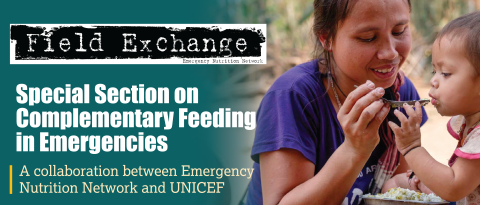A summary of the CHAIN Network
This is a summary of the CHAIN Network and its recent research outputs, available at: The CHAIN Network (2022) CHAIN Publications.
https://chainnetwork.org/research/
James Berkley is a Professor of Paediatric Infectious Diseases, Senior Clinical Research Fellow and Consultant Paediatrician in the Nuffield Department of Medicine at the University of Oxford.
The Childhood Acute Illness and Nutrition (CHAIN) Network was set up to address the problem that, despite significant global reductions in child mortality, the overall risk of death among acutely ill children remains high. There is also growing evidence that a large portion of mortality occurs after discharge from hospital. This may be attributed to the types of illness, underlying comorbidities such as malnutrition, HIV and other chronic conditions, social conditions such as poverty, maternal physical or mental ill health, childcare challenges or difficulty accessing services and limitations in medical or nutritional care.
The CHAIN Network (CHAIN) brought together clinicians and scientists to better understand pathways leading to death in children aged 2 to 23 months admitted to hospitals in Africa and South Asia despite aiming to follow the World Health Organization’s Care and Treatment guidelines as closely as possible. CHAIN enrolled children at admission to hospital and followed up for six months after discharge, collecting exceptionally detailed data on demographics, geography, health, anthropometry, diet, economic, living and childcare circumstances and maternal characteristics. CHAIN also enrolled children of the same age in the same communities to provide an understanding of what is ‘usual’ at a single time-point. The CHAIN social science team also undertook detailed qualitative work to understand barriers and opportunities in participants’ households.
The epidemiological findings from the 3,101 children included in the CHAIN cohort study and the social science findings have been recently published (CHAIN Network 2019, 2020; Muraya et al 2021; Zakayo et al 2020) and a systems biology study utilising samples from the CHAIN cohort remains ongoing – aiming to identify metabolic, nutritional, immunological, infective and co-morbidity pathways to address in future clinical trials.
CHAIN found that admission to hospital was often in the context of a long series of interactions with various health providers regarding the child’s illness. Nearly half of all deaths occurred after discharge from hospital regardless of anthropometric classification (using mid-upper-arm circumference and/or edema). Anthropometry was an important predictor of mortality risk capturing many risk exposures besides food security and diet. However, risks such as maternal mental health and independent employment, household characteristics and access to care had direct effects on mortality risk but were not captured by anthropometry. Risks among severely, moderately or non-wasted children markedly overlapped based on other domains of risk, suggesting that anthropometry, while important, may not be sufficient to identify risk in these vulnerable children. In addition, many admitted children were found to be at very low risk of death, suggesting that de-escalation of treatment and care may be feasible and could allow more targeted allocation of limited resources towards those at highest risk.
Clinicians and families usually believed that children had ‘recovered’ at the time of discharge, and clinicians could not reliably predict post-discharge mortality. Where children continued to be ill or developed new symptoms after discharge, families felt ‘disconnected’ from the health system even when they were attending nutrition or other clinics. Consequently, among the post-discharge deaths, more than half occurred at home rather than during a re-admission to hospital.
The results from CHAIN indicate that we need to revisit how care/treatment guidelines are formulated. Currently, clinical syndrome protocols capture children with mortality risks ranging from almost none to very high. Formal risk stratification would allow some lower risk children to go home much earlier, avoiding costs to the health system and financial burden on families and also reducing exposure to the hospital environment. Hospital resources could be allocated towards children identified as higher risk.
Currently, guidelines contain very little advice on discharge or post-discharge care. CHAIN suggests that continuity of care could be improved in several ways. At discharge, communication of ongoing risks, training in danger sign recognition and facilitated access to emergency care may be beneficial. The COVID-19 era has brought forward the concept of the ‘virtual ward’ where the hospital team could monitor children at home by phone or SMS.
For more information, please contact James Berkley at JBerkley@kemri-wellcome.org
References
Childhood Acute Illness and Nutrition (CHAIN) Network (2019) Childhood Acute Illness and Nutrition (CHAIN) Network: A protocol for a multi-site prospective cohort study to identify modifiable risk factors for mortality among acutely ill children in Africa and Asia. BMJ Open, 9, 5.
Childhood Acute Illness and Nutrition (CHAIN) Network (2022) Childhood mortality during and after acute illness in Africa and south Asia: A prospective cohort study. Lancet Global Health, 10, 5.
Muraya K, Ogutu M, Mwadhi M et al (2021) Applying a gender lens to understand pathways through care for acutely ill young children in Kenyan urban informal settlements. International Journal for Equity in Health, 20, 17.
Zakayo S, Njeru R, Sanga G et al (2020) Vulnerability and agency across treatment-seeking journeys for acutely ill children: How family members navigate complex healthcare before, during and after hospitalisation in a rural Kenyan setting. International Journal for Equity in Health, 19, 1, 136.


